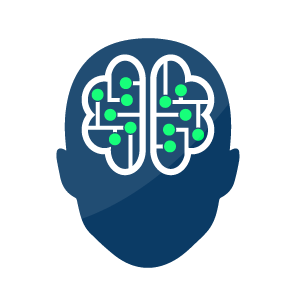Post-Concussive Syndrome Case Study | Decreased Symptom Provocation with Virtual Reality
Written by Arik Yates in collaboration with the Neurological Recovery Center, Neuro Kinetix, and Neuro Rehab VR.
ABSTRACT
Post-concussive syndrome is considered an “invisible injury” i.e. it is not as obvious of an injury as say someone who has an injured limb. To put it simply, post-concussive syndrome is when concussion symptoms last longer than expected. Due to this many patients not only suffer concussion symptoms but also can go into “forced isolation” due to not being able to participate in scholastic and social events. Most treatment options for PCS are to allow the “natural healing process'' to occur, but there is no one individual treatment that is effective in the majority of cases. This study involves a ten year old patient who suffered a mild TBI/concussion due to a blow in the head following by impact of head to wooden floor who performed Virtual Reality exercises as a part of her normal physical therapy routine over the course of two months.
INTRODUCTION
The patient is a 10 year old female diagnosed with post concussive syndrome 11/02/2018 and was enrolled in therapy at the Neurological Recovery Center from 05/01/2019 to 07/31/2019. Due to her injury the patient complained of consistent headache, dizziness, vertigo, and nausea. These symptoms were caused by head movement, bright lights, loud sounds, strong smells, reading, watching tv, closing eyes in shower, ascending/descending stairs, car rides, busy/noisy environments, and fatigue. During patients 3x a week therapy sessions, she preformed virtual reality exercises along with her regular therapy routine.
CLIENT CHARACTERISTICS
Patient was highly motivated despite her complaints. The patient had goals of returning to school since she had to be removed due to symptom provocation as well as return to playing soccer, gymnastics, softball, playing with family and friends, and gain increased independence. Since date of symptom provocations, the patient had not been able to participate in any of the above activities and her burden of care was greatly impacted.
EXAMINATION FINDINGS
On the date of initial evaluation the patient demonstrated difficulty tolerating standing, a full hour of therapy, running, head movements, forward and backward stair climbing, and balance. The patient remained motivated and willing to work through headaches and symptoms.
INTERVENTIONS
Virtual Reality exercises were administered to the patient utilizing Neuro Rehab VRs XR Therapy System. Her activities included functional reaching outside of base of support, squatting, interacting with objects above head level and on floor level requiring the patient to hold head positions that would normally cause symptom provocation for varying durations. Physical therapist would report symptoms intermittently but would remain motivated and ask to continue virtual reality exercises. The patient would perform the above activities within virtual Reality three times a week for 20 minutes.
OUTCOME
At discharge (07/31/2019) patient demonstrated the ability to independently wash hair and tie shoes, walk up and down stairs with a handrail at home forward and backward (without handrail in clinic), Running/jumping/climbing with minimal provocation of symptoms, diving into swimming pools, cartwheels, and family play. After a 3 month period post discharge patient reports that she has started going back to school as a full time student, preformed rock climbing, camping trip, is able to run up and down stairs, joined the drama club, softball, and the ability to read for over an hour all with minimal symptom provocation.
DISCUSSION/CLOSING
As we can see with the outcome, the addition of Virtual Reality exercises within her regular therapy program aided in returning this patient to her prior level of function during the two month period in which these interventions were administered. This patient was able to tolerate positions that would normally aggravate symptoms for longer durations while in virtual reality verses being out. With post concussion syndrome therapy requiring interventions of working through symptoms with frequent breaks, Virtual Reality aided in making an engaging therapeutic intervention and enhancing the patients experience during her physical therapy leading to greater durations of exercise tolerance.

